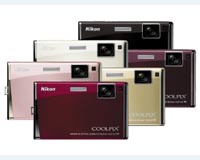 |
Reston VA (SPX) Mar 05, 2010 An imaging technique combining ultrasound and specially modified contrast agents may allow researchers to noninvasively detect cancer and show its progression, according to research published in the March issue of The Journal of Nuclear Medicine (JNM). The technique enables researchers to visualize tumor activity at the molecular level. "We hope this technique might be helpful for the early detection of disease," said Juergen K. Willmann, M.D., lead author of the study and assistant professor of radiology at Stanford University School of Medicine. "It may help save lives by finding cancer-such as breast, ovarian or pancreatic cancer-in the very early stages, when it is still curable." In the study, researchers intravenously injected microbubbles-gas-filled spheres small enough to travel through vessels-into mice with cancers. The microbubbles, which were paired with a new peptide (a molecule that consists of a chain of amino acids), were designed to travel through the vascular system and attach to integrin-a well-characterized molecular marker that acts as a "red flag" for tumor vessel growth, or angiogenesis. Tumor vessel growth occurs when active tumor cells create certain pathways to provide the tumor with a sufficient supply of oxygen, nutrients and other factors needed for growth. Once the gas-filled microbubbles seek out the cancers and attach to their vessel walls, they send out strong signals that are picked up by standard clinical ultrasound scanners. The imaging signals produced by the microbubbles are reflected back to the ultrasound transducer and illuminate the areas that outline the tumor, thus providing researchers with a sonogram of tumor vessel growth on a molecular level. "Ultrasound holds great promise for the application of molecular imaging because it is widely available, relatively inexpensive and safe. There is no exposure to radiation and repetitive imaging is not a concern," said Dr. Willmann. "Furthermore, the targeted microbubbles have great potential for translation from bench to bedside-which will be explored in future studies," said Sanjiv Gambhir, M.D., Ph.D., director of the molecular imaging program at Stanford. Contrast-enhanced ultrasound can be used to image blood perfusion in organs, to measure blood flow rate in the heart and other organs and to perform other applications-such as characterization of focal lesions in the liver. Current interest is focused on modifying contrast agents to make them specifically useful for molecular imaging. The microbubbles, paired with the new peptide that binds to tumor vessel cells as studied in the current research, may be more effective than antibody molecules, which are time-intensive to produce, are costly and may cause adverse reactions in patients. Noninvasive imaging strategies such as the one described in the JNM study may be particularly helpful for diagnosing cancer in its earliest stages as well as for developing therapeutic agents to treat cancer and monitoring whether treatment is working. Authors of "Targeted Contrast-Enhanced Ultrasound Imaging of Tumor Angiogenesis with Contrast Microbubbles Conjugated to Integrin-Binding Knottin Peptides" include Juergen K. Willmann, Richard H. Kimura, Nirupama Deshpande, Amelie M. Lutz, Jennifer R. Cochran, and Sanjiv S. Gambhir of the Molecular Imaging Program at Stanford, Department of Radiology, School of Medicine, Stanford University, Stanford, Calif.
Share This Article With Planet Earth
Related Links Stanford University School of Medicine Hospital and Medical News at InternDaily.com
 Cameras Of The Future: Heart Researchers Create Revolutionary Photographic Technique
Cameras Of The Future: Heart Researchers Create Revolutionary Photographic TechniqueOxford UK (SPX) Feb 17, 2010 Scientists funded by the Biotechnology and Biological Sciences Research Council and the British Heart Foundation at the University of Oxford have developed a revolutionary way of capturing a high-resolution still image alongside very high-speed video - a new technology that is attractive for science, industry and consumer sectors alike. By combining off-the-shelf technologies found in stan ... read more |
|
| The content herein, unless otherwise known to be public domain, are Copyright 1995-2010 - SpaceDaily. AFP and UPI Wire Stories are copyright Agence France-Presse and United Press International. ESA Portal Reports are copyright European Space Agency. All NASA sourced material is public domain. Additional copyrights may apply in whole or part to other bona fide parties. Advertising does not imply endorsement,agreement or approval of any opinions, statements or information provided by SpaceDaily on any Web page published or hosted by SpaceDaily. Privacy Statement |